Horse travel tips: Advice for loading & transporting horses
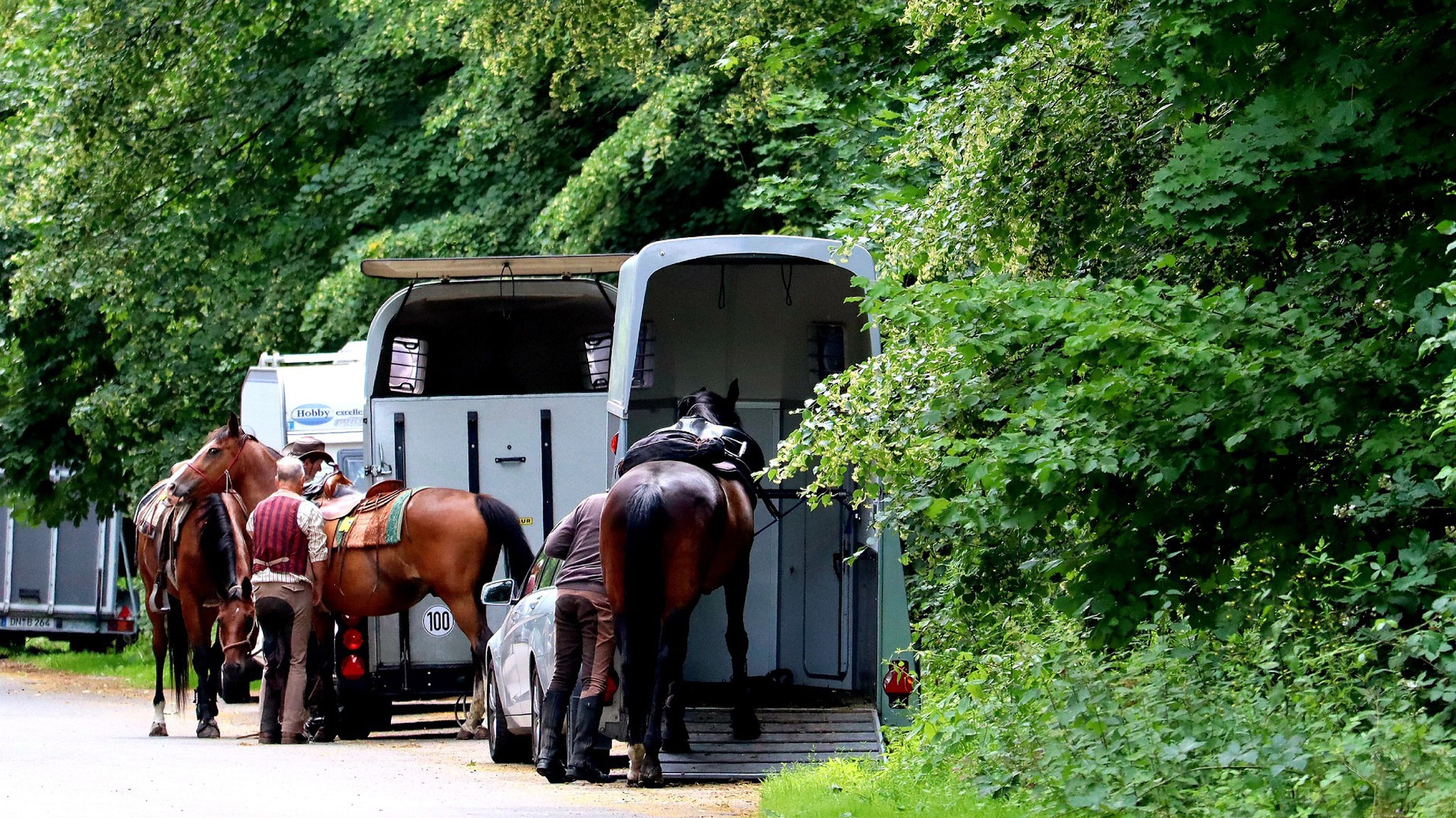
Transporting your horse is an inevitable part of horse ownership. Whether you’re travelling for a competition or off to explore some new hacking routes, it’s important that getting your horse from point A to point B is as safe and stress-free as possible. However, travelling can often be scary for horses, especially if they’ve never travelled in a trailer or horsebox before. And if your horse becomes stressed while loading or transporting, this can pose a significant safety risk for both your horse and yourself.
If you’re transporting your horse for the first time or you’re struggling to get your horse to co-operate, our horse travel tips will help. We’ll cover everything you need to know about loading a horse and transporting them safely and calmly, so you can head out onto the road and enjoy your trip together. We’ll cover:
- What is a horsebox?
- What is a horse trailer?
- Can my vehicle tow my horse trailer?
- Horse trailer law
- Preparing your horse for travel
- Horse loading tips
- Horse loading problems
- How long can a horse stay in a trailer?
- How to transport a horse overseas
What is a horsebox?
A horsebox is a vehicle that’s used to transport a horse (or horses) and has a driver’s compartment built into the front and a compartment for horses in the back. They can range in size from small horseboxes capable of carrying one or two horses, to larger vehicles capable of carrying more weight. Some horseboxes can also include small living areas, used for travelling long distances or for staying at competition venues.
What is a horse trailer?
A horse trailer is like a stationary version of a horsebox that attaches to the back of your vehicle to be towed. Often, a horse trailer is a cheaper option and is best for owners who don’t need to transport their horse very often. If you frequently travel with your horse or don’t like the feeling of towing a trailer, then a horsebox may be a better fit.
Can my vehicle tow my horse trailer?
If you’re thinking of buying a horse trailer, then it’s vital that your vehicle is able to tow your trailer and its load to be able to transport your horse safely. So, it’s important to do the maths to work out if your car can in fact tow your chosen trailer.
We spoke to the DVSA to find out exactly how you can transport your horse safely, as well as how to choose a car that suits your trailer, in our guide to safe and lawful towing. But you’ll also find a quick summary below.
To work out if your vehicle can tow your horse trailer, you’ll need to know:
- The starting weight of your trailer
- The weight of the largest horse you’ll be trailering
- Your car’s maximum towing capacity (MTC)
You’ll be able to find out your vehicle’s MTC in its handbook. If not, then you’ll be able to work it out by taking a look at the weights on your Vehicle Identification Number plate. Here, you’ll find:
- The gross vehicle weight (GVW) or the maximum authorised mass (MAM) of the vehicle. This includes the driver, passengers, goods, and fuel.
- The gross train weight (GTW). This is the combined MAM of the vehicle and the trailer.
- The maximum axle loads on the front and rear.
Then, you can work out the MTC using the calculation: GTW – GVW = MTC
Horse trailer law
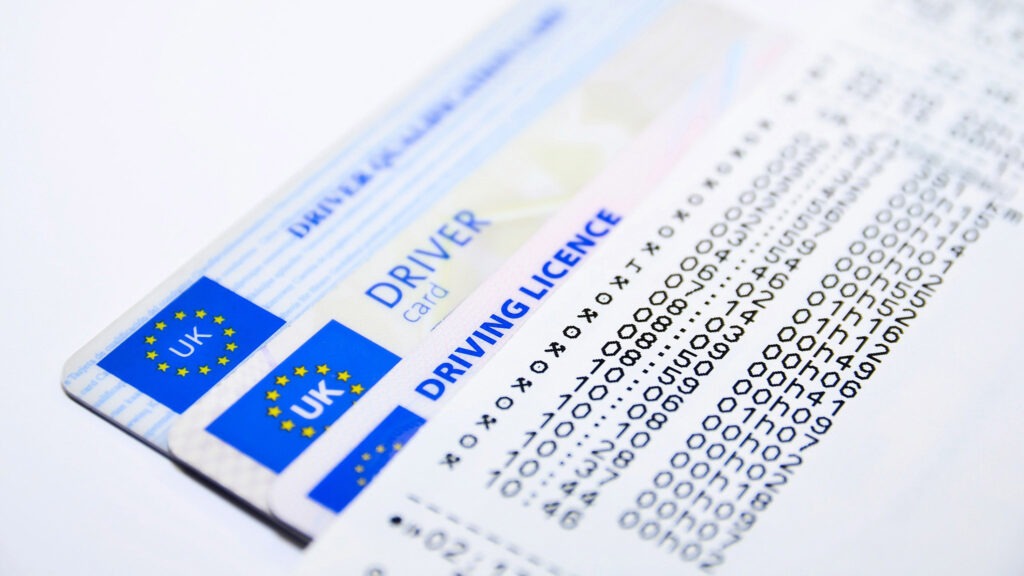
When transporting horses in horseboxes and trailers, there are a few laws you’ll need to adhere to. These are:
Driver’s licence
You should have the right driving licence required for the weight of your vehicle. The correct driving licence category will depend on the weight of your horsebox, so be sure to check your licence against the licence categories on the government website.
Please note that, as of the 16th of December 2021, drivers who passed their driving test after the 1st of January 1997 are able to tow a trailer of up to 3,500kg MAM without taking any extra tests. This is under the new trailer towing law introduced as part of the government’s plans to tackle the HGV driver shortage. However, drivers are still encouraged to undergo training before towing a horse trailer or driving a horsebox.
You may also need to get an animal transportation certificate of competence to transport horses for commercial reasons or on journeys of 65km or more. If your horsebox weighs over 3,500kg, you may need to apply for a Driver Certificate of Professional Competence.
Operator licence
While you won’t need to apply for an operator licence if you’re travelling for leisure, you may need an operator licence if you are:
- Being paid to transport horses,
- Receiving payment as a result of transporting horses (for example in the form of prize money), or
- Using the horsebox or trailer for a professional activity.
If you’re travelling for commercial purposes rather than leisure, you will need to apply for an operator licence no matter how short your journey is. But the type of licence you apply for can depend on your vehicle type and ownership status.
Restricted licence: If you own your horse and are travelling with a vehicle and horse trailer or horsebox with a MAM of over 3,500kg.
Standard national licence: If you don’t own the horse, are travelling with a vehicle and horse trailer or horsebox with a MAM of over 3,500kg, and are travelling inside the UK.
If you’ll be travelling abroad, follow our advice below for transporting a horse overseas.
Transport documents
If you’re transporting horses in or from Great Britain, then you may also need various transport documents. These include:
- Transporter authorisation. This authorisation is valid for five years and is split into two types based on your length of journey:
- Type 1 (short journey): For journeys over 65km and up to eight hours
- Type 2 (long journey): For journeys over eight hours
- Certificate of vehicle approval. This is for journeys over eight hours.
- A journey log for transit of unregistered horses on journeys longer than eight hours
- An animal transport certificate for journeys that do not require a journey log
Driving hours
If you’re transporting a horse for commercial purposes or in a vehicle that has a MAM of 7,500kg or more, then you’ll need to follow the rules for driving hours for goods vehicles inside of Great Britain. These state that you must:
- Drive no longer than 10 hours in a day,
- Travel no longer than 5 hours and 30 minutes before taking a 30-minute break, or
- Travel no longer than 8 hours and 30 minutes without a 45-minute break
You’ll also need to use a tachograph, which records your speed, distance, and driving time.
Speed
When towing a horse trailer, you should follow the speed limits for cars towing caravans or trailers. This is 50mph on single carriageways and 60mph on dual carriageways and motorways. The law also states that you cannot travel on the outside lane of a three-lane motorway while towing (unless there is a lane closure that directs you into the outside lane).
MOTs
It is a legal requirement to get an annual MOT on your horsebox to ensure it’s in good enough condition to drive and travel with. You should also conduct a full walkaround check of your horsebox or trailer before travelling to check for any signs of damage or wear which could become dangerous. This includes checking any internal stalls, partitions, breast bars, and loading ramps.
Breakdown cover
Before travelling, make sure your breakdown cover includes trailer and horse recovery. Most ordinary breakdown cover does not include horse and trailer assistance, so it’s best to check your policy in advance of travelling to avoid being stranded.
Preparing your horse for travel
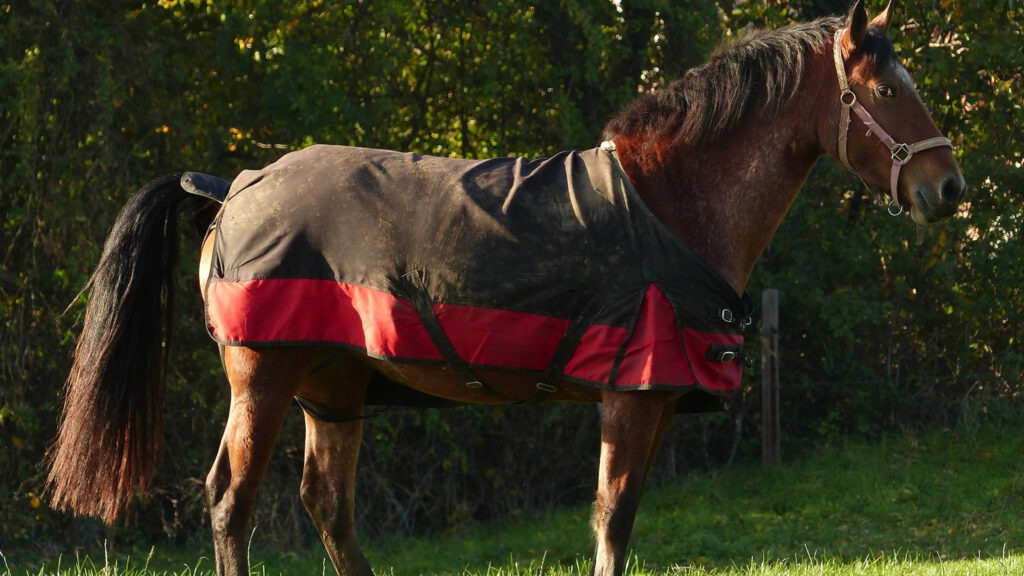
Before you load your horse into their trailer, it’s important that you get them prepared for travelling. Making sure your horse is healthy and comfortable before heading out on the road can help make the journey much easier (and safer) for you both.
Health
Before going on a long trip, you should check that your horse is up to date with their vaccinations and is happy and healthy. It may help to have them examined by a vet before your trip to ensure that there’s no problems that you haven’t picked up on yet.
It’s also important that your horse is given plenty of water before travelling. Trailering can be stressful for horses, which can increase the likelihood of dehydration, so giving them plenty of water before loading should help. You could also consider giving them a soaked mash to eat while in their trailer to keep their water levels up.
Clothing
Your horse should be kitted out with all the necessary travel clothing when going on a trip to protect them from injury and to keep them comfortable during loading and unloading, and on the journey itself. This includes leg protection — such as travel boots or bandages — a tail guard, and a poll guard, as well as a well-fitting leather head collar. It’s vital that the head collar is made from leather, as these will break under stress, keeping your horse safe. Nylon versions will not break and can cause friction burns, which can add to your horse’s distress.
Depending on the weather, your horse may also need a sweat or cooler rug. These are breathable blankets designed to keep your horse warm either after exercising or during transport. However, bear in mind that a rug is not always necessary when travelling, as some horses can overheat when rugged in a trailer. If you’re not sure whether your horse needs a rug, be sure to check our horse rugging tips, which includes a handy temperature guide.
Training
If you’re planning on travelling with your horse, you’ll need to make sure that they’re fully trained and comfortable with loading and unloading, particularly if you’ll be loading your horse into a trailer for the first time. Training your horse to load in the weeks leading up to your travel day can help make the whole process go much more smoothly. You’ll also be able to identify whether your horse is scared or stubborn when loading so you can put a training regime in place to help them. It may also help to do a few practice journeys in the days leading up to your travel day, so they can get used to the feeling of being on the road.
Planning
Before heading off on your journey, it’s important that you plan your trip carefully, including the route you’ll take and where you’ll stop for breaks. Try to choose the smoothest route if possible, as this will be the most comfortable for your horse.
You may also need to bear the temperature in mind so you can choose the best time of day to travel. In the summer, it’s best to travel in the early morning or in the evening, when the temperature is a little cooler. In the winter, try to avoid travelling in extreme temperatures or harsh weather conditions.
Horse loading tips
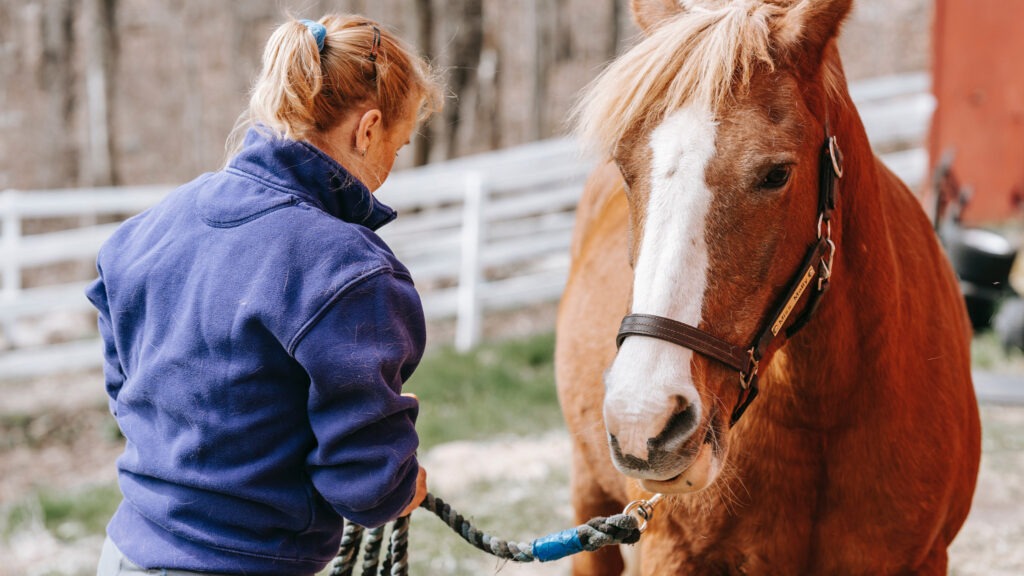
When loading and unloading your horse, it’s important that you follow all the necessary steps to keep both you and your horse safe and calm. Before loading, be sure to inspect your vehicle for any signs of damage and check your oil levels and tyre pressure to ensure you’ll be able to reach your destination safely. If you’re travelling with a trailer, it should always be hooked up to a parked vehicle before loading to ensure it doesn’t move as your horse enters.
How to load a horse
Once you’ve got all the preparation in place, it’s time to start loading. The steps below outline how to load a horse safely. Remember, you’ll need a helper to assist you with loading your horse, unless you are confident that your horse can self-load.
- Stand to the side and gently lower the loading ramp.
- Make sure everything is in place for your horse, that they have sufficient ventilation, and plenty of soft, absorbent bedding.
- Check that the breast bars are secure and are at the right hight for your horse.
- Place your horse’s head collar over their head.
- Lead your horse towards the ramp. If they don’t have any problems loading, then they’ll continue to walk straight up the ramp. This is often the spot where horses can refuse to load. If this is the case, then read our section on horse loading problems below.
- Ask a friend to secure the breech bar or partition (depending on what your trailer or horsebox has) to keep your horse in place. If you’re loading a horse by yourself, you’ll need to teach them to self-load so you can secure the breech bar from the outside.
- Tie your horse to the tie ring using your preferred safety release mechanism, such as a safety release clip or Velcro tie. This will stop your horse from moving around too much in the trailer, preventing them from getting into an uncomfortable position or injuring themselves. If there is an accident and the horse pulls back, the safety release mechanism will break.
- Raise and secure the ramp. Do this slowly and carefully to avoid spooking your horse.
- Check that all doors and ramps are secure and fastened before setting off.
What side should a horse travel in a trailer in the UK
If you’re transporting just one horse, the horse should always travel on the same side as the driver, which is the right side here in the UK. This helps balance the trailer or horsebox. All roads have a slight angle on their surface (called the camber) which slopes towards the outside of the road. This helps with drainage and avoids flooding. So, the most weight should be furthest away from this slope to keep the balance in check. If you’re travelling with more than one horse, the heaviest horse should be placed behind the driver.
How to unload a horse
Once you’ve reached your destination, it’s time to unload your horse. Our tips below will help you unload your horse from a trailer or horse box safely.
- Gently lower the loading ramp.
- Enter the horse box or trailer calmly and untie your lead rope, making sure to stand in a position that puts your safety first.
- Undo the breast and breech bars or partition, ensuring that your horse stays calm and still. Again, make sure that you are putting your safety first and that you are not standing with a risk of being pulled over or trampled should your horse begin to rush or panic.
- If your trailer or horsebox has a front or side ramp, then ask them to quietly walk forwards. If your trailer only has a back door, then it’s often best to encourage them to back out rather than turning them around.
Horse loading problems
https://www.shutterstock.com/image-photo/horse-ready-go-van-car-carrying-1645180150
If your horse won’t load into their trailer or horsebox, then you’re not alone. This is one of the most common problems many horse owners face when transporting their horse and it can occur for a variety of reasons. In many cases, the horse may not be comfortable with entering or being inside the trailer, while others may have never learnt how to load into the trailer or horsebox in the first place. Whatever the case is, most horse loading problems can be solved by teaching your horse to be comfortable entering and being inside a horsebox.
Before teaching your horse to load, be sure to check for any injuries that could be the root cause of the problem. If your horse previously used to load without an issue and has suddenly started refusing, it could be due to pain, so get them checked out by a vet to rule out any health problems.
If your horse is fit and healthy, then you can start working on teaching your horse to load. The tips below should help you identify whether your horse is confused about the task or simply stubborn, as well as work out the steps you can take to help them. We also have plenty of videos on the topic, such as our On The Road series with Kelly Marks, where she helps out three non-loading horses and their owners.
How to load a scared horse into a trailer
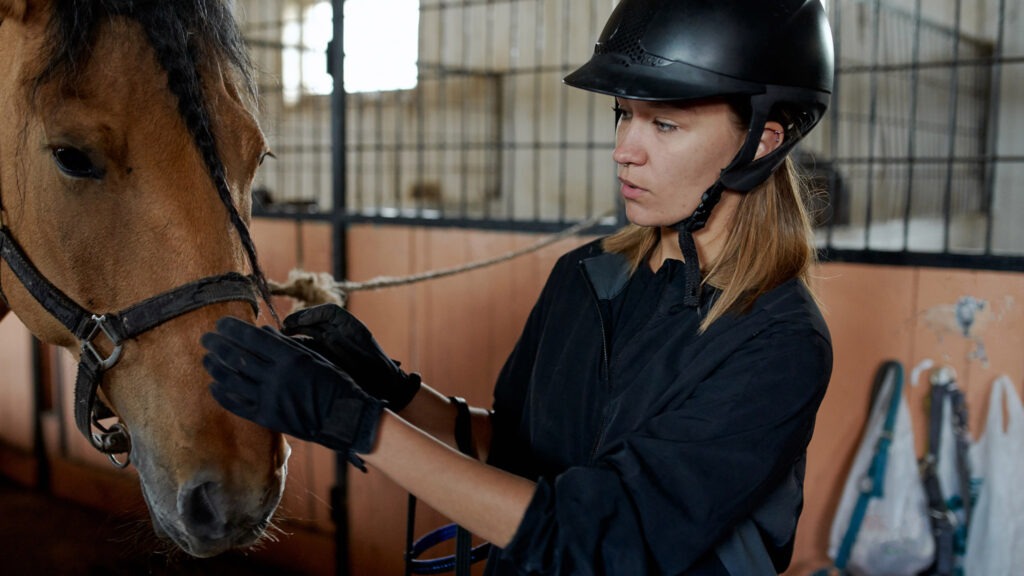
When your horse refuses to load, note the behaviours they’re showing, as this can be a good indicator of how they’re feeling and what you can do to help. If your horse is scared, they’ll be tense and they may also roll their eyes so you can see the whites. Their nostrils might also be flared and their tail may be pressed down.
If your horse shows any of these signs while loading, it’s likely that they’re feeling anxious either about the loading itself or about being inside the trailer. This means your next steps should be ones that ease their anxieties and make them feel more positively about trailering. Below are just some of the exercises you can try to help load a scared horse into a trailer or horsebox. To see some of these tips in practice, be sure to watch Kelly Marks’ advice for loading scared horses in her Listening to Horses series.
Stay calm
Horses are very receptive to our body language. If your horse won’t load, then it could be because they’re picking up on small signs of your own stress or anxiety, which can make them feel stressed and anxious too. Before training your horse to be more comfortable loading, consider whether it is your horse that is refusing or if it’s yourself. If loading makes you anxious, then practice some slow, deep breaths to calm yourself down. Having more confidence yourself can give your horse the courage they need to load.
Go for a walk
If your horse is showing signs of distress while loading, then taking them away from the trailer or horsebox and on a walk can quickly help to calm them down. A change of scenery may help to troubleshoot any problems your horse may be having while loading. You can either go back and try again once the horse is calm or try out some exercises, such as target training or groundwork, before attempting to load them again.
Target training
One simple way to help your horse become more at ease with loading is by teaching them to follow a target. If your horse often gets stuck on the ramp, then getting them to follow a target in front of them can help encourage them to keep moving. To practice target training, you’ll need to get your horse to understand how to follow the target. So, hold a target stick in front of them and reward them every time they touch it with their nose.
Once they’re aware that they’ll be rewarded for touching the target stick, hold it in front of them, but this time start walking a few steps and encourage them to follow. Stop and give them a treat when they stop and touch the target.
After they’ve practiced this skill a few times, try bringing the target out when they get stuck while loading. Whenever they show signs of distress, try asking them to follow the target into the trailer and reward them for loading successfully.
Build confidence
If you’ve tried the methods above and your horse still won’t load, then there are a range of exercises you could try to help with different stages of loading. By simulating some of the things they’ll experience while entering a horsebox when they’re relaxed and in a safe space, you can help ease their anxieties while loading.
If your horse won’t approach the horsebox: Try approaching the trailer or horsebox gradually. Be sure to stop every time they show signs of being anxious and give them some time to stand still and calm down before continuing. While this can take some time at first, being patient and taking it slowly can help your horse become more comfortable with approaching their trailer or horsebox.
If your horse won’t step on the ramp: Consider having them step over a pole to simulate stepping onto the loading ramp. To do this, lay a pole on the ground and have your horse step over it with their front legs. Ask them to stop for a few seconds before stepping forwards and over the pole with their hind legs. Once they’ve mastered this skill, move onto a piece of plywood to simulate the wooden ramp. Making your horse more confident with stepping over obstacles and onto different surfaces can make them feel much more relaxed when stepping onto the loading ramp.
If your horse won’t enter the horsebox: Consider why your horse might not want to enter their trailer or horsebox. For example, is the trailer safe and comfortable? If not, then take steps to make your horsebox more pleasant for your horse. If there doesn’t seem to be any issues with your horsebox, then your horse may have a fear of confined spaces. To desensitise your horse to tight spaces, try having them walk between two poles or barrels, or through a tight gate. Repeating this exercise regularly can help your horse get more used to stepping into the confined space of a horsebox.
If your horse tries to escape the horsebox: Encourage your horse to stay in their trailer using target training. Have them practice walking towards and standing calmly next to a stationary target while in their stable. Then, move the stationary target into their trailer or horsebox. This can encourage your horse to stand calmly once they’re inside and have reached the target. Many horses also respond to food incentives, so consider putting a hay net inside their trailer or horsebox to encourage them to stand still.
If the horse panics while you’re driving: Sometimes horses can have no problems loading but will panic during travel. And, if they’ve had bad experiences while travelling, this can put them off loading in the first place. If this is the case, then be sure to take care while driving. It might help to do a few short distance practice runs before you need to travel in which you can drive slowly and carefully and show your horse that there’s nothing to be afraid of.
When it comes to loading a horse that won’t load, it’s important to stay patient and calm. Your horse may need some time to process the commands they’re being given and rushing them can cause them to become even more stressed. So, give them time to practice and respond to you and don’t force them to enter the trailer or horsebox if they’re really distressed. In some cases, it might help to take them away from the situation and try again another day.
For more advice, be sure to check out our 10 tips to help your horse load properly.
How to load a stubborn horse into a trailer
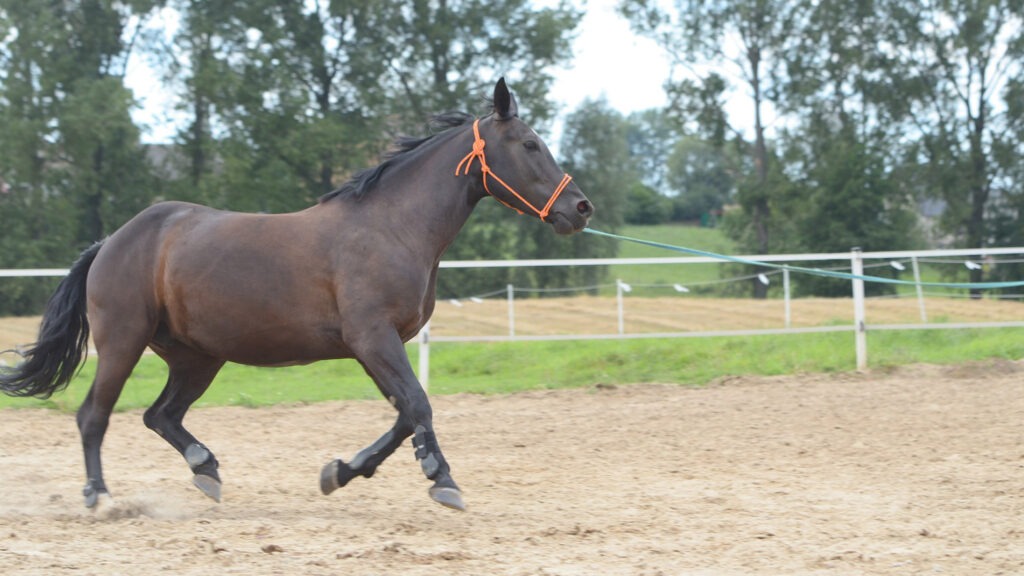
If your horse won’t load in a trailer and it’s not because they’re scared or in pain, then it’s likely that they’re simply being stubborn. Some horses can be more prone to stubbornness than others, whether that’s down to their breed or personality. Target training can be an effective method for helping a stubborn horse onto a trailer or horsebox. However, teaching obedience is also key to getting a difficult horse to load.
We recommend practicing four simple commands: standing, backing up, leading, and stopping. These are four skills that you’ll need during loading, so ensuring that your horse can understand and follow them can help make trailering much easier.
Standing
The first command you horse should master is standing. Although it may sound basic, this command provides the basis for the rest of your groundwork training, so making sure your horse can obey this command is vital. While your horse is wearing a halter and rope or lunge line, try to get them to stand still for 10 seconds, before praising them and moving onto the next command.
Backing up
The next command your horse will need to master is backing up. This can help if they become pushy while walking, as well as teach them to back out of the trailer while unloading. To instruct your horse to back up, take the rope or lunge line in your left hand and lightly press on the horse’s shoulder with your right while saying the “back” command. When the horse backs away make sure to praise them. Gradually, your horse will learn to respond your commands and pressure.
Leading
A horse that leads politely will be more responsive to loading, so be sure that they’re able to follow behind you at a steady pace and respond to your queues. While your horse is walking, they should remain focused on your body language and not pull on the rope or try to move in another direction. A good sign of a focused horse is if their nose is running parallel to your arm and their eye is parallel to your shoulder. If they start to become distracted then tighten the pressure on the rope, immediately loosening it once they refocus. If they’re pushing ahead, tighten the pressure on the rope and gently back them up. Once they’re at a respectful distance, loosen the pressure and praise them.
Stopping
The final groundwork exercise to practice is stopping, so ask your horse to halt as you’re walking. They should stop at a respectful distance. If not, back them up and ask them to stop again. Once they stop correctly, be sure to praise them.
Once you’ve mastered your basic groundwork your horse should be more responsive to your commands while loading. For more groundwork tips, be sure to watch our video with Annemarie van der Toorn as she shares her groundwork techniques that will help you bond with your horse.
How long can a horse stay in a trailer?
Ideally, horses should always be rested for 24 hours after each day of travelling. This means that it’s recommended not to travel your horse on consecutive days, if possible. On average, your horse will be able to stand in their trailer for up to nine hours a day if they’re given plenty of food and water. So, it’s important to take regular breaks throughout your journey, not only to give yourself a rest from driving, but to give your horse a break and a chance to have a drink.
When travelling in hot weather, it’s even more important to give your horse a rest, and breaks should be increased to every two hours. This will keep them comfortable and will help to avoid dehydration and overheating.
How to transport a horse overseas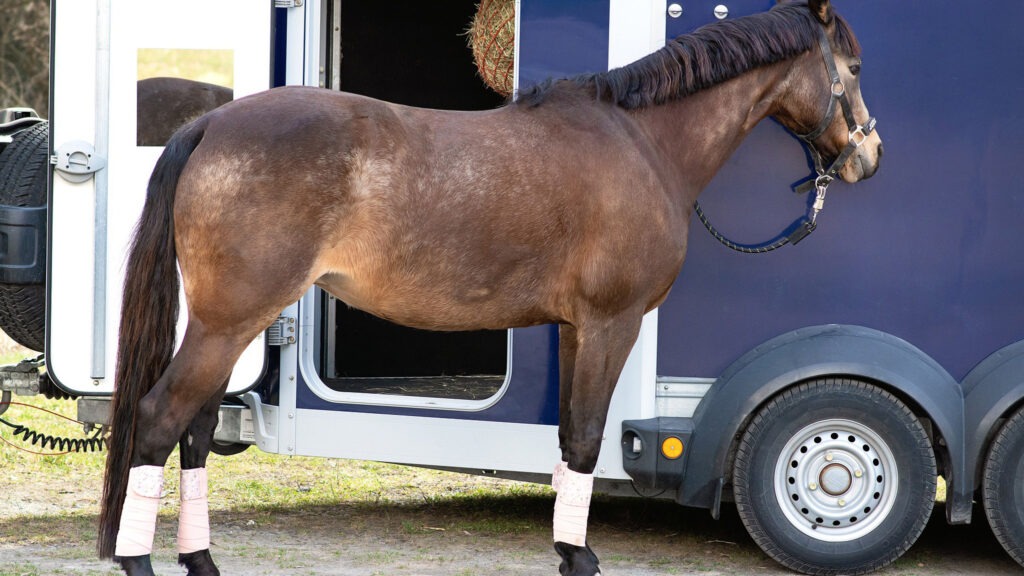
If you need to travel to another country for a holiday or competition, then there are a few ways you can take your horse with you.
By plane: Travelling by plane is often the quickest and safest way to transport horses over long distances, however as it is expensive, it’s mostly sports horses that will travel in this way. Horses will usually be loaded onto custom built cargo planes. To do this, they’ll be loaded onto pallets. The pallets are then lifted and loaded onto the plane.
By sea: Horses can also be transported by sea on a ferry, although this can be time consuming and the horse can often become unsettled, making this a particularly unfavourable option for many horse owners. Most ferry companies will also refuse to travel with horses in particularly rough conditions, which can add even more time onto the journey.
By road: Of course, you can also drive your horse to another country. As of 2010, it is now legal to travel with your horse through the Channel Tunnel via the Eurotunnel. You can find out more about taking your horse on the Eurotunnel on their website.
What documents do I need to transport my horse overseas?
As with any long-distance travel, you’ll need to ensure you have the correct documents and horsebox insurance, and that you follow all the laws and procedures when transporting your horse overseas. These can vary depending on where you’re travelling to and how long you plan on staying, so be sure to check with your destination country to see what paperwork you’ll need.
As well as the usual paperwork needed to transport horses inside the UK, you’ll also need to apply for a standard international operator licence if you’re travelling abroad with:
- A horse that you don’t own,
- A vehicle and horse trailer or horsebox that has a MAM of over 3,500kg.
You’ll also need to:
- Apply for an export health certificate issued by DEFRA and signed by a vet. It’s vital that you get your horse checked by a vet well in advance of travelling to test for any diseases and ensure that they’re up to date with their vaccinations and worming treatments.
- Have the right equine identification (horse passport),
- Meet and isolation and residency requirements,
- Check that you or the person transporting the horse has the right documents, including licences and travel documents,
- Check if you need an export welfare declaration,
- Check if you need a country parish holding number,
- Be aware of the border rules.
The information you need can depend on where you plan to travel to and the purpose of your travel. You can find all the information you need on transporting horses from the UK, including which paperwork you’ll need and how to obtain it, on the government website.
Travelling with your horse can take some time and preparation, but with enough practice you’ll be able to teach your horse to load calmly and safely. Our horse travel tips above should give you everything you need to know about loading a horse, trailering laws, loading a difficult horse, and transporting your horse overseas, so you can enjoy your journey together.
For more horse care and riding tips, be sure to take a look at some of our other informational guides or view our great selection of videos here at Horse & Country. We have an amazing range of resources from some of the best equestrian experts in the country, including Annemarie Van der Toorn, and more. Subscribe to our service today to get access to thousands of hours of training and learning videos, documentaries, live events coverage, and entertainment.






